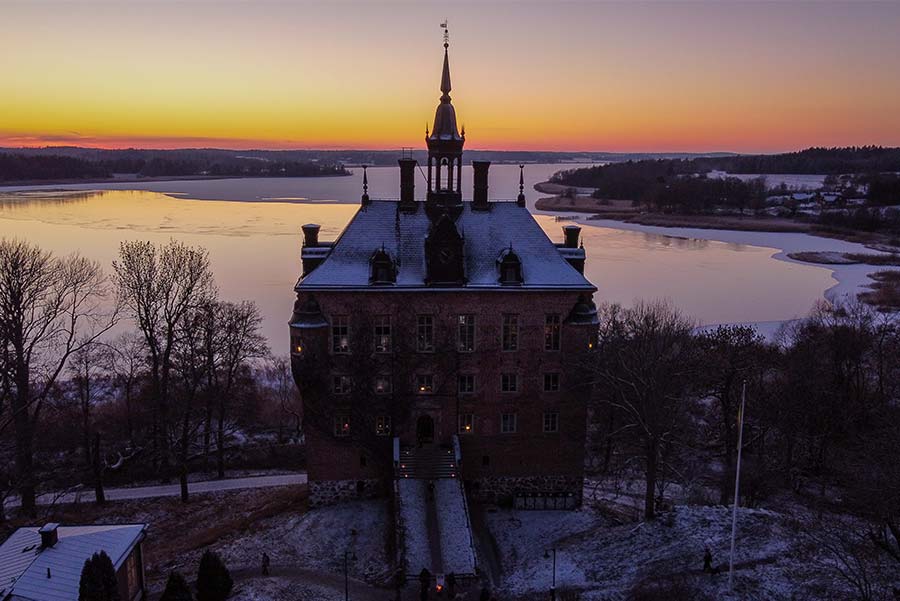Hear the Drowned Lady’s Screams at the Castle
Wiks Castle is one of the country’s best-preserved medieval fortresses with origins dating back to the 13th century. The castle is located south of Uppsala and today features a hotel, beautiful nature, an apple orchard, and a residential college. Like any castle with self-respect, Wiks, of course, also has its own ghost. Guests have, on several occasions, reported seeing unexplainable things both inside the castle and in the park outside. A gigantic female figure with a long cloak and a triangular hat sometimes emerges from the water in the bay outside. Residents in the area tell tales of waking up in the middle of the night to the sound of screams across the lake.

One theory is that it’s Anna von der Grünaus who haunts this place. Anna was a lady-in-waiting at the court before she married and moved to Wiks Castle in 1610, where her time was short and unfortunate. Just two years later, she became a widow. Anna hailed from Austria, had long black hair and dark eyes, and spoke a language that the local people didn’t understand, leading to rumors that she might be a witch. In the same year she became widowed, during the winter of 1612, Anna was on her way to nearby Skokloster Castle to visit her friend. Their travel party chose to cross the ice behind the castle, which unfortunately cracked beneath them. Anna fell through the ice and, thanks to her many layers of clothing, floated on the water – something that was considered typical of witches at that time. Her companions panicked and fled. Anna was later found frozen to death in the water.
You can visit Wiks Castle as a hotel guest, or simply visit to experience the area’s nature, parks, and café. Learn more about Wiks Castle here.